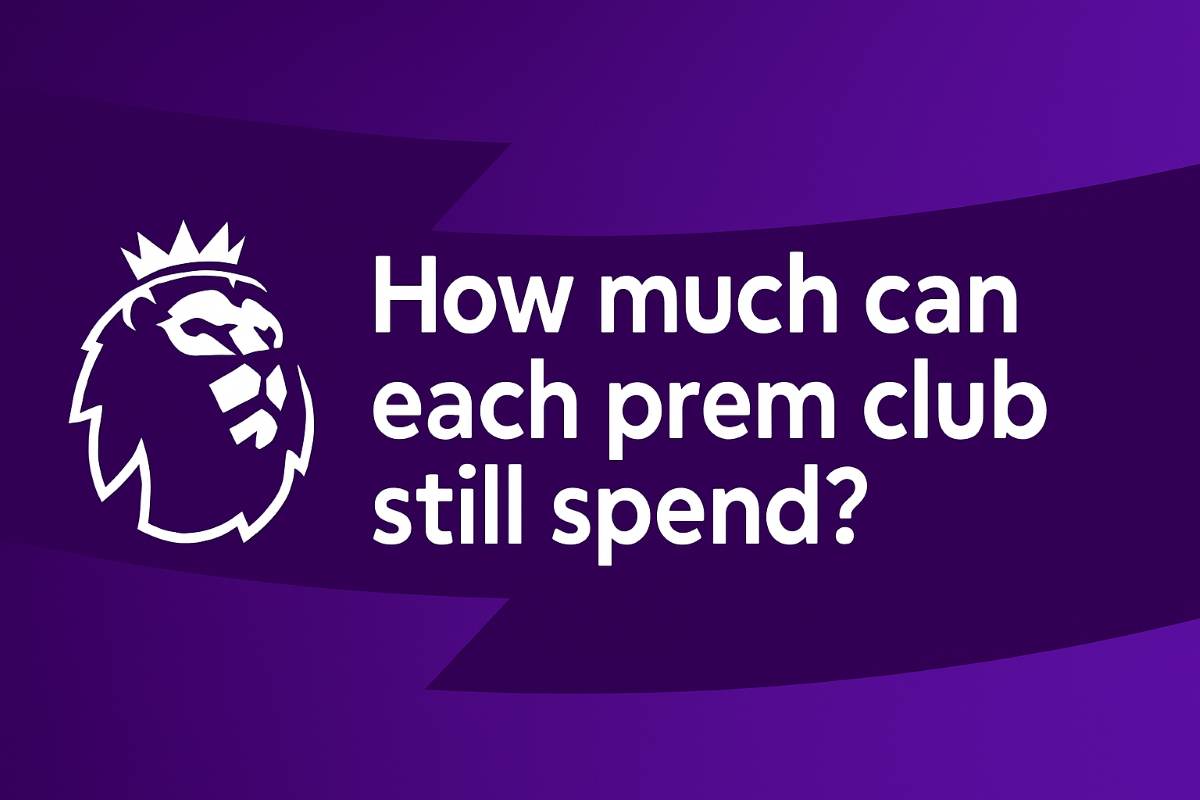 01 Sep, 2025
01 Sep, 2025
Premier League PSR – How Much Money Does Each Club Have Left?
Our resident FM expert gives an an in-depth breakdown of Premier League teams PSR situation. He takes you through PSR rules, summer spending, remaining PSR headroom, why a record breaking summer of expenditure did not break PSR and more!

The rules
Why net spend isn’t the same as PSR headroom
We all love Sky’s transfer ticker, but PSR is based on accounting principles, not headline fees. A £100m signing on a five-year deal isn’t £100m straight into the accounts. It’s £20m per season in amortisation. Wages, agent fees and bonuses are added on top.Player sales are often booked as immediate profit if the player was homegrown or fully amortised, which is why so many transfers go through before the 30 June accounting deadline each year.
This summer’s transfer spending
- Arsenal: £254m
- Manchester United: £170.5m
- Newcastle: £165.6m
- Tottenham: £137.8m
- Everton: £116m
- Sunderland: £110.9m
- Liverpool: £110m
- Leeds: £91.5m
- West Ham: £70.6m
- Manchester City: £66.3m
- Burnley: £57.8m
- Nottingham Forest: £53.5m
- Chelsea: £9.5m
- Brentford: –£3.9m (net profit)
- Aston Villa: –£8m
- Fulham: –£9.6m
- Wolves: –£38.7m
- Crystal Palace: –£44m
- Brighton: –£46.15m
- Bournemouth: –£76.3m
Estimated PSR headroom for each club:
- Manchester City: £200m+ headroom
- Brighton: £100m+ headroom
- Tottenham: £100m+ headroom
- Chelsea: £80–100m headroom (boosted by one-off internal deals)
- Liverpool: £50–75m headroom
- West Ham: £50m headroom
- Arsenal: £40m headroom
- Manchester United: £40m headroom
- Brentford: £60m headroom
- Crystal Palace: £25–30m headroom
- Bournemouth: £25m headroom
- Sunderland: £20m headroom
- Fulham: £20m headroom
- Newcastle: £10m headroom
- Wolves: £5m headroom
- Nottingham Forest: ~£5m headroom
- Leeds United: ~£0–5m headroom
- Aston Villa: ~£0 headroom
- Everton: ~£0 headroom
- Burnley: ~£0 headroom
Who’s sitting comfortably:
Manchester City made profits across the last two years, have the highest revenues in the league and only mid-table net spend this summer. Their buffer is enormous.
Tottenham benefit from stadium costs being excluded and have rising revenues. Their PSR limit is huge.
Brighton and Brentford continue to trade brilliantly, selling players at peak value and reinvesting smartly. Both posted net transfer profits this summer and have plenty of space left.
West Ham still benefit from the accounting profit on Declan Rice’s £100m move and European prize money.
Who’s walking the tightrope:
Everton have already had points deductions in the past two seasons. They sold players to stay compliant but then spent aggressively this summer. Their margin is slim.
Nottingham Forest swung from losses to a £10m profit in 2024 after selling Brennan Johnson, but a £53.5m net spend this summer means careful wage and amortisation management is needed.Newcastle sold Elliot Anderson and Yankuba Minteh to scrape through the last cycle, then spent £197.6m this summer. Champions League revenue helps, but the buffer isn’t big.Aston Villa had to sell before the 2024 deadline to comply. This summer they made a small net profit and kept wages in check, but there’s no real margin for error.
Why a record window didn’t break PSR:
Two main reasons:
- Lots of clubs also sold heavily. Bournemouth sold £197.3m worth of players. Brighton, Palace and Wolves posted big net profits this summer too.
- Transfer costs are spread over the length of contracts, so the real PSR impact lands over several seasons, not in one go.
Where clubs stand now:
- Well inside limits: Brighton, Brentford, Palace, Bournemouth, Wolves – thanks to big sales and smart trading.
- Big spenders but compliant: Arsenal, United, Liverpool, Newcastle, City, Spurs – revenues, amortisation schedules and owner support keep them safe.
- On the edge: Everton, Forest, Burnley, Villa, Leeds – they’re running on tight margins and heavy reliance on outgoing sales.
Final thoughts:
Love it or hate it, PSR isn’t there to stop spending. It’s there to make clubs pace themselves and balance the books over time. Although this definitely seems to benefit some clubs more than others.That’s why you can have a £2.6bn summer window and still see every club technically stay within the rules. But for a few of them, that line is now paper-thin.
If you loved this FM article from our resident FM expert Billy, then you absolutely have to check out his breakdown of the single biggest FM survey ever taken!
Check out our full, in depth FM 26 Release Date article, which is constantly updated when we get news on anything FM 26 related!
